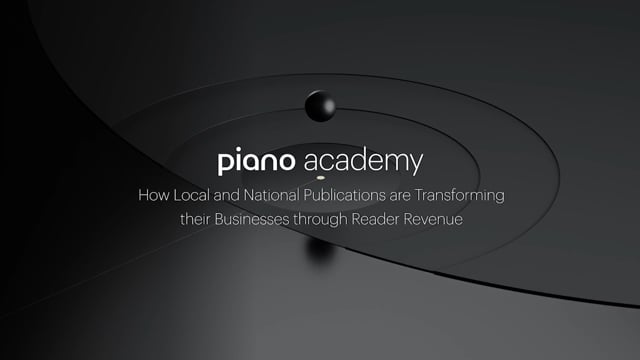How The Daily Beast Redefined Their Concept of Loyalty by Using Data to be Dynamic in Onsite Experiences
Overview
The Daily Beast is a modern news and pop culture site that covers the colorful characters and situations impacting our world. Fueled by a relentless focus on scoops, their newsroom hustles to bring readers the whole story with a human face. In 2018, the publication worked with Piano to launch a freemium member model, which included locked stories for members as well as exclusive content and newsletters for subscribers.
Objective
The Daily Beast wanted to increase their use of data to rethink who their loyalists were and develop targeted marketing experiences for these and other audience segments. When the publication launched with Piano’s Strategic Services, they asked as part of the validation process, “Do we have loyalists?” It turns out The Daily Beast did have a group of visitors who visited five or more sessions per month, and they were making up 40% of their pageviews from only 4.5% of their sessions. They decided that as users came back more frequently, they would increase the cadence with which they targeted them, which was successful for the first six months. But after that point, The Daily Beast realized that the concept of a loyalist went beyond a basic, binary definition.
Looking at the data internally, The Daily Beast found that the median number of sessions on which users converted was about seven. From there, they began viewing loyalty on a spectrum, incorporating three tiers of engagement:
- Habit users — those users completing seven sessions a month
- Engagement users — users completing five or six sessions a month
- Reach users — the full reach of audience users, completing one to four sessions a month
These new definitions let The Daily Beast do slightly more sophisticated targeting. However, they weren't super successful in terms of targeted marketing because they saw a ton of conversions happening in that middle tier — the engagement users. That prompted The Daily Beast to ask themselves why so many users converted in this middle bucket.
Solution
Going into 2020, The Daily Beast found that home page usage combined with a level of engagement is the strongest signal of predicting conversion. The middle tier of users were coming up to 15 times a month, but they weren't converting, and they weren't taking the actions The Daily Beast thought they would. They discovered that these users were coming via referrals — they weren’t actually loyal — which flipped how The Daily Beast thought about defining and targeting loyalists:
- Product users — converting and performing actions the publication wants them to do, plus hitting the homepage at least once a month
- Brand users — come via algorithmically-driven sites, but never visit the homepage, so are, in effect, loyal to a service, not to the publication
- Story users — there for the story, they come once and never come back
By putting themselves in their users’ shoes, The Daily Beast understood users were coming for their stories, not for their brand. From there, they decided to build in more ways for users to make that choice to pay for content or unlock a specific story that drew their interest. This reframing of their major audience segments helped The Daily Beast grow their extreme loyalists around the major news events that happened in 2020, such as COVID-19, protests over racial injustice and the presidential election.
In June 2020, the publication launched a dynamic paywall using Piano’s Likelihood to Convert scoring model. “We shifted because we felt like the business really needed us to evolve our thinking with locking content for readers, the newsroom wanted their stuff to be read more widely and the business wanted more pages they can monetize with ads,” said Lauren Bertolini, Chief Product Officer at The Daily Beast.
The scoring is currently done on every page view. The first thing The Daily Beast did was map those loyalty groups to the LTC segments, bucketing the scores into four groups:
- High-score users
- Low-score users
- Unscored “bad” referrers
- Unscored “good” referrers
Then, The Daily Beast began identifying the next best action for the reader to take, such as a newsletter signup, a paid subscription, a trial or Web push subscriptions.
“Sometimes the truth is, the bar is way too high for a reader to pay us at that moment,” Bertolini, said. “And there are better, easier actions for them to take.”
This evolved into the “Happy Path” for each user segment. For their most important segment, the product loyalists, “this group largely understands what we have to offer,” Bertolini said. “They've been exposed to our marketing. They've seen our pricing. They've probably received, if they are a newsletter subscriber, offers in their email. So all we really need to do is sort of just push them across the finish line.” This is the group for which The Daily Beast will serve dynamic paywall messaging, especially during a big news cycle, adjust their pricing strategy or push to their iOS app.
Results
Thanks to this new approach, The Daily Beast has increased their year-over-year conversion growth by 16x. Heading further into 2021, the publication wants to probe how to keep subscribers engaged, moving beyond just shifting unknown users to known.
“If we think about the future of the cookie, known users are important, but known and engaged users are the most important, and we have to think about that engagement piece, not just once they've paid,” Bertolini said. “And I think that's going to be where we really try to build stronger and more targeted strategies going into the rest of this year.”





